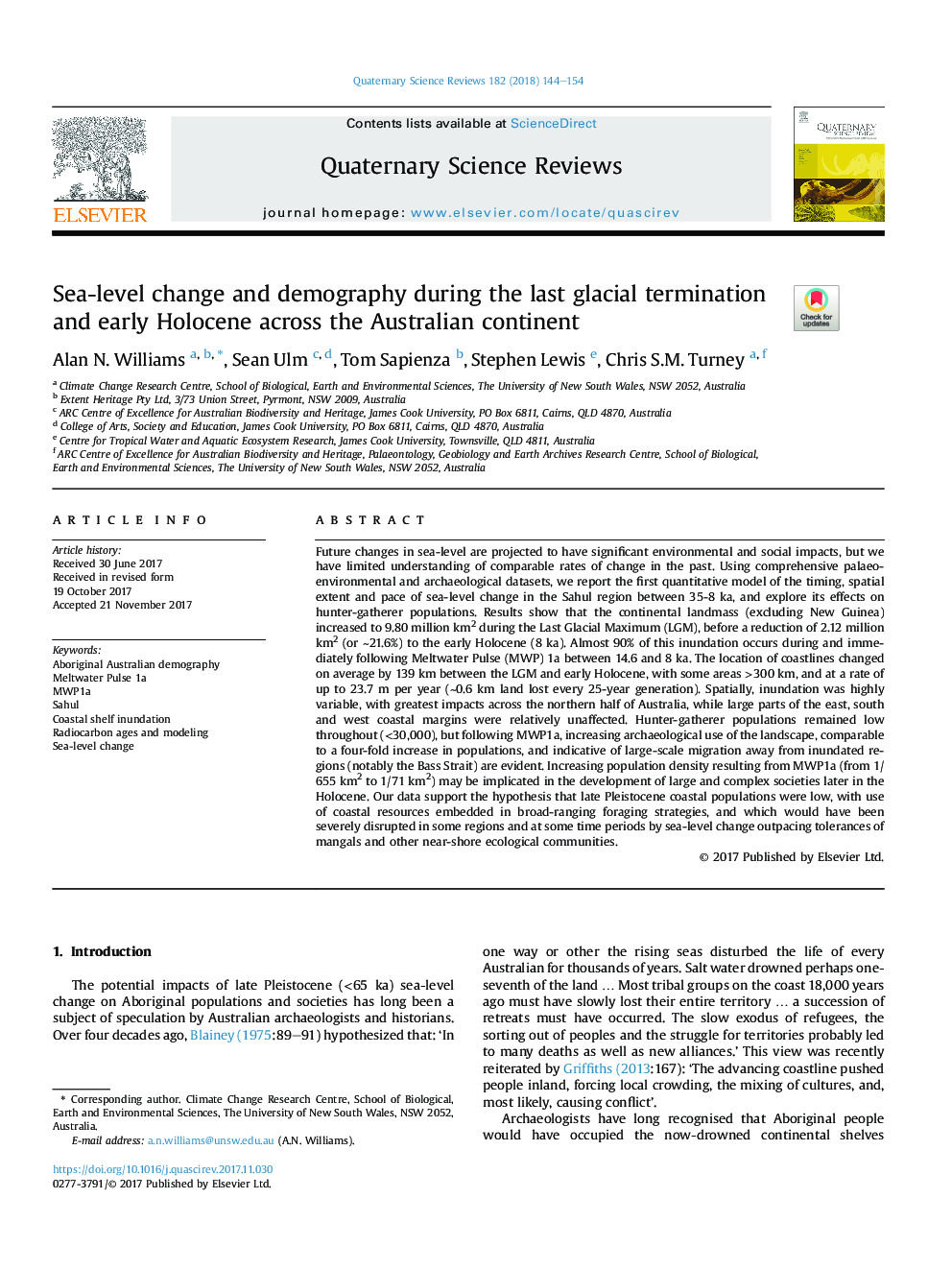| کد مقاله | کد نشریه | سال انتشار | مقاله انگلیسی | نسخه تمام متن |
|---|---|---|---|---|
| 8914998 | 1640753 | 2018 | 11 صفحه PDF | دانلود رایگان |
عنوان انگلیسی مقاله ISI
Sea-level change and demography during the last glacial termination and early Holocene across the Australian continent
ترجمه فارسی عنوان
تغییر سطح دریا و جمعیت شناسی در طول آخرین ختم یخبندان و گلوتن زودرس در قاره استرالیا
دانلود مقاله + سفارش ترجمه
دانلود مقاله ISI انگلیسی
رایگان برای ایرانیان
موضوعات مرتبط
مهندسی و علوم پایه
علوم زمین و سیارات
زمین شناسی
چکیده انگلیسی
Future changes in sea-level are projected to have significant environmental and social impacts, but we have limited understanding of comparable rates of change in the past. Using comprehensive palaeoenvironmental and archaeological datasets, we report the first quantitative model of the timing, spatial extent and pace of sea-level change in the Sahul region between 35-8 ka, and explore its effects on hunter-gatherer populations. Results show that the continental landmass (excluding New Guinea) increased to 9.80 million km2 during the Last Glacial Maximum (LGM), before a reduction of 2.12 million km2 (or â¼21.6%) to the early Holocene (8 ka). Almost 90% of this inundation occurs during and immediately following Meltwater Pulse (MWP) 1a between 14.6 and 8 ka. The location of coastlines changed on average by 139Â km between the LGM and early Holocene, with some areas >300Â km, and at a rate of up to 23.7Â m per year (â¼0.6Â km land lost every 25-year generation). Spatially, inundation was highly variable, with greatest impacts across the northern half of Australia, while large parts of the east, south and west coastal margins were relatively unaffected. Hunter-gatherer populations remained low throughout (<30,000), but following MWP1a, increasing archaeological use of the landscape, comparable to a four-fold increase in populations, and indicative of large-scale migration away from inundated regions (notably the Bass Strait) are evident. Increasing population density resulting from MWP1a (from 1/655Â km2 to 1/71Â km2) may be implicated in the development of large and complex societies later in the Holocene. Our data support the hypothesis that late Pleistocene coastal populations were low, with use of coastal resources embedded in broad-ranging foraging strategies, and which would have been severely disrupted in some regions and at some time periods by sea-level change outpacing tolerances of mangals and other near-shore ecological communities.
ناشر
Database: Elsevier - ScienceDirect (ساینس دایرکت)
Journal: Quaternary Science Reviews - Volume 182, 15 February 2018, Pages 144-154
Journal: Quaternary Science Reviews - Volume 182, 15 February 2018, Pages 144-154
نویسندگان
Alan N. Williams, Sean Ulm, Tom Sapienza, Stephen Lewis, Chris S.M. Turney,
